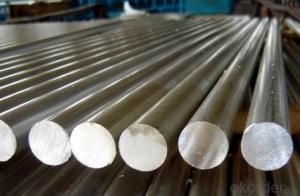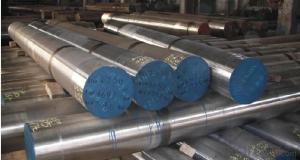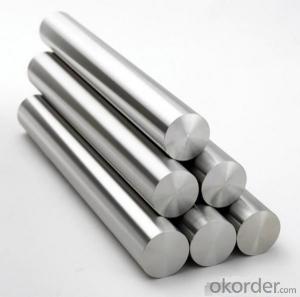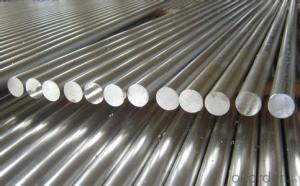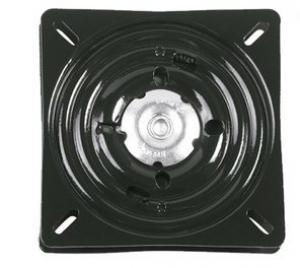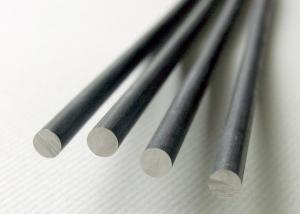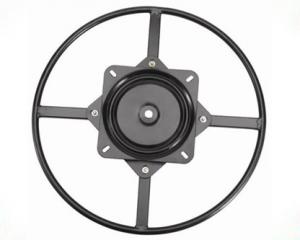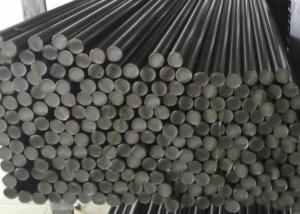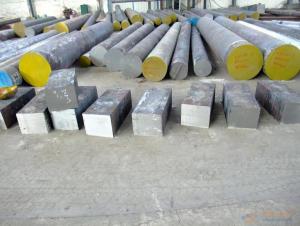Grade AISI431 Stainless Steel Round Bar Large Quantity in Stock
- Loading Port:
- Tianjin
- Payment Terms:
- TT OR LC
- Min Order Qty:
- 1 m.t.
- Supply Capability:
- 10000 m.t./month
OKorder Service Pledge
OKorder Financial Service
You Might Also Like
Item specifice
Grade AISI431 Stainless Steel Round Bar in stock
Descriptio of Grade AISI431 Steel Round Bar in Stock
(stainless steel round bar, angle bar , flat bar , channel bar , hexagon bar , square bar .)
1.grade:201,202,301,302,303,304,304L,308,309,310,310S,316,316L,321,410,420,430,etc.
2.diameter:3mm-400mm.
3.surface:bright , black , pickeled & bright .
4.length: no more than 6 m .
5.packing: according to international standards of export .
6.trade terms: FOBshanghai , CIF+import port .
7.payment terms: L/C at sight , 30% T/T in advance + copy of B/L .
8.delivery time: within 8 to 12 days since the receipt of payment .
9. MOQ is 1 ton .
Description of Grade AISI431Steel Round Bar in Stock
Standard | AISI , JIS , ER , GB , ASTM , etc. |
| Grade | 201,201,301,302,303,304,304l,308,309,310,310S,316,316L,321,410,420,etc. |
| Application | widely used in the areas as ss fasteners , chains , kitchen and sanitary wares , furniture handles , handrails , electroplating and electrolyzing pendants , foods, electron , petroleum , construction and decoration , etc. with a high strength after cold-drawn , anti-stress corrosion , good surface . |
| Chemcial composition | according to international standards of ASTM , AISI , JIS , ER , GB ,etc. |
Company Information of Grade AISI431 Steel Round Bar in Stock
CNBM International Corporation is the most import and export platform of CNBM group(China National Building Material Group Corporation) ,which is a state-owned enterprise, ranked in 270th of Fortune Global 500 in 2015.
With its advantages, CNBM International are mainly concentrate on Cement, Glass, Iron and Steel, Ceramics industries and devotes herself for supplying high quality series of refractories as well as technical consultancies and logistics solution.
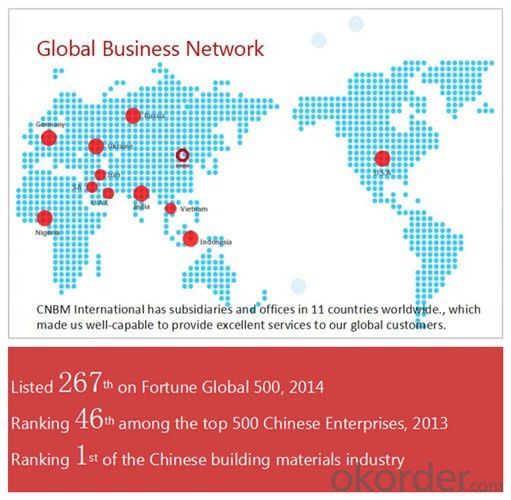
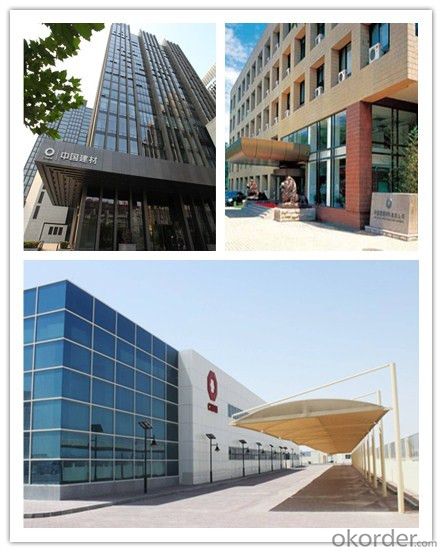
Packaging & Delivery of Grade AISI431 Steel Round Bar in Stock
Packaging Detail | Sea worthy packing /as per customer's packing instruction |
Delivery Detail | 15 ~ 40 days after receiving the deposit |
Products Show
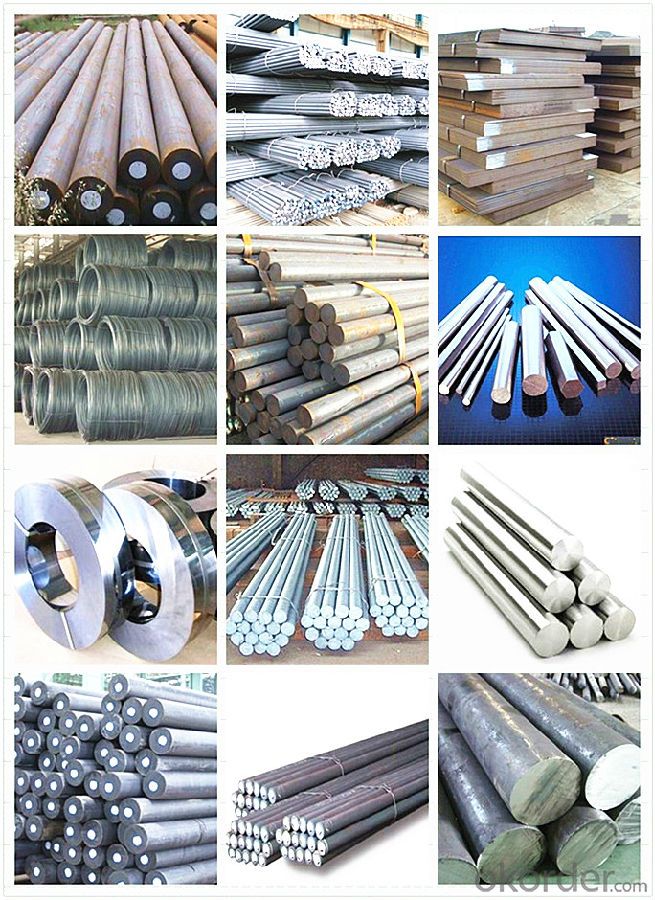
FAQ:
Are you a trading company or manufacturer? | Manufacturer |
What’s the MOQ? | 3 metric ton |
What’s your delivery time? | 15-35 days after downpayment received |
Do you Accept OEM service? | Yes |
what’s your delivery terms? | FOB/CFR/CIF |
What's the Payment Terms? | 30% as deposit,70% before shipment by T/T |
Western Union acceptable for small amount. | |
L/C acceptable for large amount. | |
Scrow ,Paybal,Alipay are also ok | |
Why choose us? | Chose happens because of quality, then price, We can give you both. Additionally, we can also offer professional products inquiry, products knowledge train (for agents), smooth goods delivery, excellent customer solution proposals. |
What's your available port of Shipment? | Main Port, China |
What’s your featured services? | Our service formula: good quality+ good price+ good service=customer's trust
|
Where are your Market? | Covering more than 160 countries in the world |
- Q:How is alloy steel used in the manufacturing of gears and shafts?
- Alloy steel is commonly used in the manufacturing of gears and shafts due to its superior strength, durability, and resistance to wear and tear. The combination of iron with other elements, such as chromium, nickel, or molybdenum, enhances its mechanical properties, making it suitable for heavy-duty applications. Alloy steel gears and shafts can withstand high loads and torque, ensuring smooth operation and prolonged lifespan in various industrial sectors, including automotive, aerospace, and machinery.
- Q:How does special steel perform in high-temperature oxidation with sulfur-containing atmospheres?
- Special steel performs well in high-temperature oxidation with sulfur-containing atmospheres due to its enhanced resistance to sulfur-induced corrosion. The alloy composition and surface treatment of special steel enable it to form a protective oxide layer that prevents sulfur from penetrating the material, thereby reducing the risk of oxidation and corrosion.
- Q:What are the different coating techniques for special steel parts?
- There are several coating techniques that can be used for special steel parts, depending on the specific requirements and desired properties. Here are some of the commonly used coating techniques: 1. Electroplating: This technique involves depositing a layer of metal onto the surface of the steel part through an electrochemical process. It provides excellent corrosion resistance and can also enhance the appearance of the part. 2. Thermal spraying: This technique involves melting or heating a coating material and spraying it onto the steel surface. It can be done using various methods such as flame spraying, plasma spraying, or arc spraying. Thermal spraying is commonly used to provide wear resistance, thermal insulation, or to restore damaged parts. 3. PVD (Physical Vapor Deposition): PVD is a vacuum coating technique where a thin film is deposited onto the steel surface. This method offers a wide range of coatings, including decorative finishes, hard coatings for wear resistance, and low-friction coatings. 4. DLC (Diamond-Like Carbon) coating: DLC is a type of PVD coating that provides a thin layer of carbon-based material with properties similar to diamond. It offers excellent hardness, low friction, and high wear resistance, making it suitable for applications where durability and performance are crucial. 5. Powder coating: Powder coating involves applying a dry powder to the steel part and then curing it through heat or ultraviolet light. This technique provides a durable and attractive finish, offering excellent corrosion resistance and protection against impact and abrasion. 6. Chemical conversion coating: This technique involves treating the steel surface with a chemical solution that forms a protective layer on the surface. Common types of chemical conversion coatings include phosphating, chromating, and anodizing. These coatings improve corrosion resistance, paint adhesion, and can also provide electrical conductivity. It is essential to choose the appropriate coating technique based on factors such as the desired properties, environmental conditions, cost-effectiveness, and the specific application requirements for special steel parts.
- Q:How does special steel perform at high temperatures?
- Special steel performs exceptionally well at high temperatures due to its unique composition and properties. Unlike regular steel, special steel is specifically designed to withstand extreme heat conditions without losing its strength or structural integrity. It exhibits excellent thermal stability, resistance to oxidation, and maintains its hardness and toughness even at elevated temperatures. This makes special steel an ideal material for various applications that require reliable performance under high-temperature environments, such as in aerospace, power generation, and industrial processes.
- Q:How does special steel perform in extreme cold temperatures?
- Special steel is custom-made to excel under frigid conditions, with alloys that possess a high level of low temperature ductility. This quality enables the steel to maintain its structural integrity even in the harshest cold settings, making it a popular choice in Arctic exploration, oil and gas operations in cold regions, and the aerospace industry. A key distinguishing feature of special steel is its resistance to brittleness when exposed to low temperatures. Unlike regular steel, which becomes brittle and susceptible to cracking in extreme cold, special steel retains its toughness, rendering it suitable for sub-zero conditions. This remarkable attribute is achieved through meticulous selection and control of the alloy's composition, allowing for a superior balance between strength and ductility. Moreover, special steel boasts exceptional resistance to corrosion, a particularly crucial trait in cold environments where exposure to snow, ice, and moisture is prevalent. The alloying elements present in special steel, such as chromium and nickel, generate a protective oxide layer on the surface, successfully preventing corrosion and preserving the steel's structural integrity. Additionally, special steel exhibits remarkable thermal conductivity, enabling efficient heat transfer even in extremely cold temperatures. This thermal property is of paramount importance in applications where effective heat management is essential, such as in the aerospace industry or in equipment operating in cold climates. In summary, special steel is meticulously engineered to excel in extreme cold temperatures. Its low temperature ductility, resistance to brittleness, corrosion resistance, and thermal conductivity establish it as a dependable and enduring material for diverse applications in cold environments.
- Q:What are the main characteristics of electrical steel?
- The main characteristics of electrical steel include high magnetic permeability, low electrical resistivity, and low hysteresis loss. It is specifically designed to efficiently conduct and transform electrical energy, making it ideal for use in transformers, motors, and generators.
- Q:What are the requirements for special steel used in transportation infrastructure?
- The requirements for special steel used in transportation infrastructure include high strength and durability, resistance to corrosion and fatigue, excellent weldability, and the ability to withstand extreme temperatures and environmental conditions. Additionally, it should meet specific standards set by regulatory bodies to ensure its safety and reliability in supporting and maintaining transportation structures such as bridges, railways, and highways.
- Q:Can special steel be used in the defense equipment manufacturing industry?
- Yes, special steel can be used in the defense equipment manufacturing industry. Special steel alloys, such as high-strength and corrosion-resistant varieties, are often utilized in the production of various defense equipment components, including armored vehicles, missiles, aircraft, and naval vessels. These specific steel types offer superior mechanical properties, durability, and resistance to extreme conditions, making them highly suitable for defense applications.
- Q:What are the different methods for tempering special steel?
- There are different methods available for tempering special steel, each having its own advantages and considerations. Some commonly used methods for tempering special steel are: 1. Air Tempering: Special steel is heated to a specific temperature and allowed to cool in still air. This method is suitable for low alloy steels and results in uniform hardness throughout the steel. 2. Oil Tempering: Special steel is heated to a specific temperature and then rapidly cooled by quenching it in oil. This method is commonly used for tool steels as it provides a good balance between hardness and toughness. 3. Water Tempering: Similar to oil tempering, this method involves quenching the steel in water after heating it to a specific temperature. It leads to a harder steel due to faster cooling, but it may also increase brittleness. 4. Salt Bath Tempering: The steel is immersed in a molten salt bath at a specific temperature. This method ensures controlled and uniform heat transfer, resulting in consistent hardness throughout the steel. 5. Cryogenic Tempering: Steel is cooled to extremely low temperatures, often below -100°C (-148°F), using liquid nitrogen or helium. This method further reduces residual stresses and enhances wear resistance of the steel. It is important to consider various factors such as the type of steel, desired hardness, intended application, and the required balance between hardness and toughness when choosing a specific tempering method for special steel. Following proper heat treatment guidelines and seeking advice from experts is crucial to achieve optimal results for a particular steel alloy.
- Q:What are the common challenges in machining special steel?
- Some common challenges in machining special steel include its high hardness, toughness, and abrasiveness, which can lead to increased tool wear and reduced cutting speeds. Additionally, special steels often have low thermal conductivity, making heat dissipation a challenge during machining. The presence of alloying elements in special steel can also result in reduced machinability and increased cutting forces. Therefore, special attention needs to be paid to selecting appropriate cutting tools, optimizing cutting parameters, and implementing effective cooling and lubrication techniques to overcome these challenges.
1. Manufacturer Overview |
|
|---|---|
| Location | |
| Year Established | |
| Annual Output Value | |
| Main Markets | |
| Company Certifications | |
2. Manufacturer Certificates |
|
|---|---|
| a) Certification Name | |
| Range | |
| Reference | |
| Validity Period | |
3. Manufacturer Capability |
|
|---|---|
| a)Trade Capacity | |
| Nearest Port | |
| Export Percentage | |
| No.of Employees in Trade Department | |
| Language Spoken: | |
| b)Factory Information | |
| Factory Size: | |
| No. of Production Lines | |
| Contract Manufacturing | |
| Product Price Range | |
Send your message to us
Grade AISI431 Stainless Steel Round Bar Large Quantity in Stock
- Loading Port:
- Tianjin
- Payment Terms:
- TT OR LC
- Min Order Qty:
- 1 m.t.
- Supply Capability:
- 10000 m.t./month
OKorder Service Pledge
OKorder Financial Service
Similar products
New products
Hot products
Hot Searches
Related keywords
